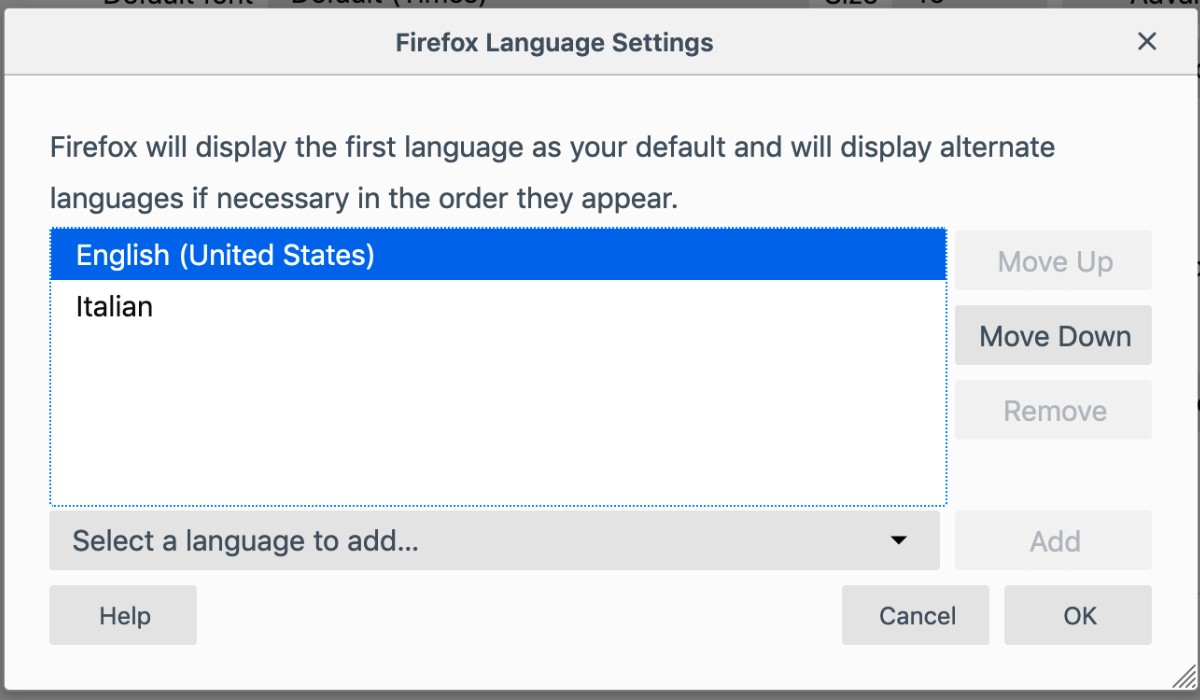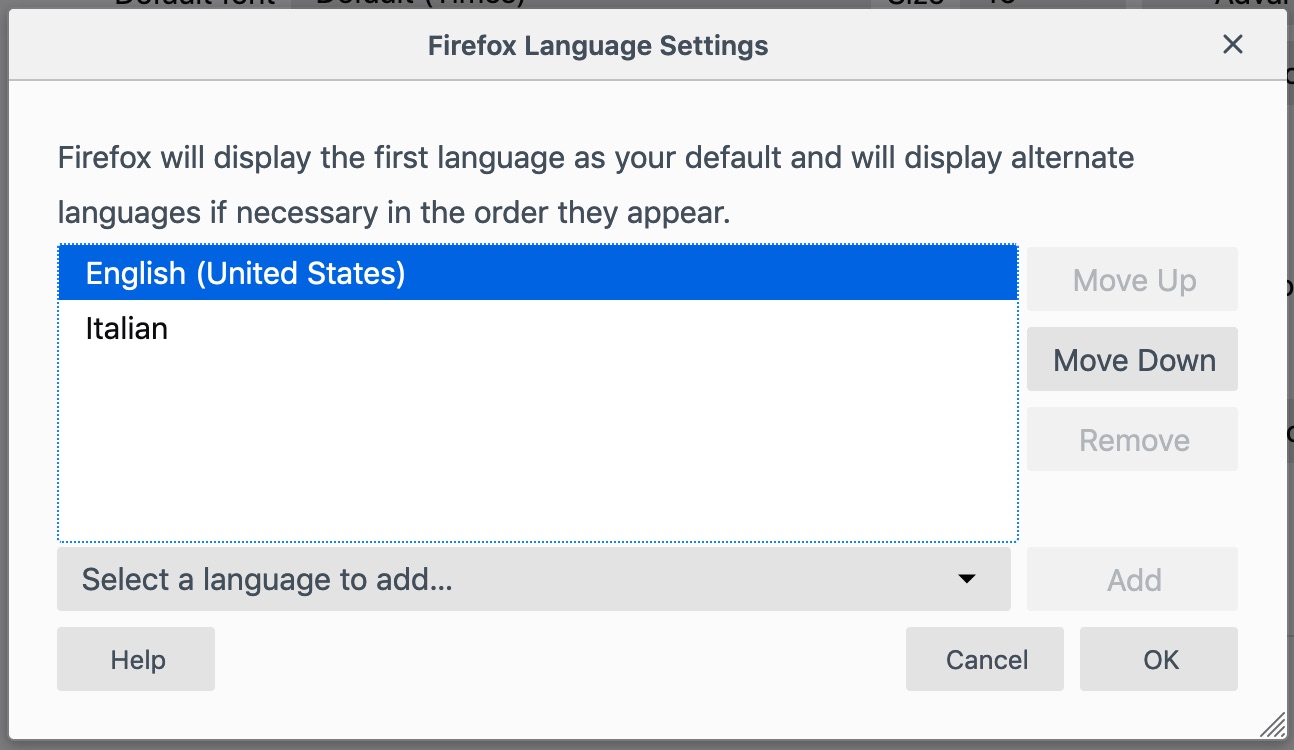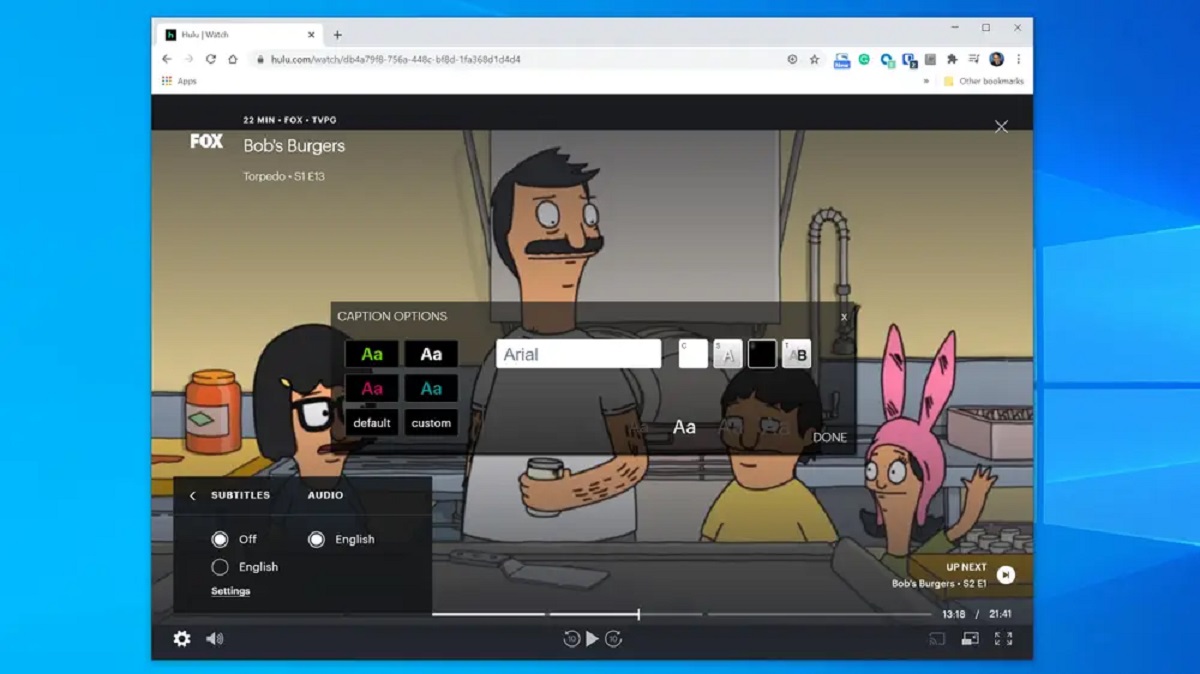Introduction
Welcome to the world of Mozilla Firefox, a versatile and feature-rich web browser that offers a seamless browsing experience. While Firefox is available in multiple languages, you may find yourself in a situation where the default language is not your preferred choice. Whether you're a native English speaker or simply more comfortable navigating the web in English, changing the language settings in Mozilla Firefox is a straightforward process.
In this guide, we will walk you through the steps to change the language settings in Mozilla Firefox to English. By following these simple instructions, you can customize your browsing experience and ensure that the browser's interface and menus are displayed in the language you prefer.
So, if you're ready to embark on this quick and easy journey to transform your Mozilla Firefox into English, let's dive into the step-by-step process. Whether you're a seasoned Firefox user or just getting started with this popular browser, you'll find that customizing the language settings will enhance your browsing experience and make navigating the web a more enjoyable and seamless endeavor.
Step 1: Open Mozilla Firefox
To begin the process of changing the language settings in Mozilla Firefox, the first step is to open the browser. Whether you're using a Windows, Mac, or Linux operating system, launching Firefox is a simple and familiar task.
If you're using a Windows computer, you can typically find the Mozilla Firefox icon on your desktop or in the taskbar. Simply double-click on the icon to open the browser. Alternatively, you can access Firefox by clicking on the Windows Start menu, locating the Mozilla Firefox folder, and selecting the browser from the list of applications.
For Mac users, locating and opening Mozilla Firefox is equally straightforward. You can find the Firefox icon in the Applications folder or the Dock. Click on the icon to launch the browser and proceed to the next step in the language customization process.
Linux users can open Mozilla Firefox by navigating to the Applications menu and selecting the browser from the list of installed applications. Alternatively, if you have Firefox pinned to your desktop or taskbar, you can launch the browser with a single click.
Once Mozilla Firefox is open, you're ready to move on to the next step in the process of changing the language settings. With the browser at your fingertips, you're one step closer to customizing your browsing experience and ensuring that the interface is displayed in your preferred language.
Now that you have successfully opened Mozilla Firefox, let's proceed to the next step and continue the journey toward transforming the browser into English.
Step 2: Access the Menu
Once Mozilla Firefox is open, the next step in customizing the language settings is to access the browser's menu. The menu is a central hub that houses a plethora of options, including those related to customization, settings, and preferences. By navigating to the menu, you gain access to the tools necessary to modify the language settings and tailor your browsing experience to your preferences.
To access the menu in Mozilla Firefox, look to the top-right corner of the browser window. Here, you will find an icon consisting of three horizontal lines, symbolizing the menu. This icon is commonly referred to as the "hamburger menu" due to its resemblance to a stacked hamburger. Click on this icon to unveil the menu options, which will be displayed in a dropdown or slide-out format.
Upon clicking the hamburger menu icon, you will be greeted with a range of options, each designed to provide easy access to various features and settings within Mozilla Firefox. These options may include but are not limited to, New Window, New Private Window, History, Full Screen, Zoom, and more. The menu serves as a gateway to the browser's functionalities, offering a convenient and intuitive way to navigate through its features.
By accessing the menu, you are taking a pivotal step toward customizing Mozilla Firefox to your language preferences. This action sets the stage for the subsequent steps in the language customization process, allowing you to delve deeper into the browser's settings and make the necessary adjustments to transform the interface into English.
With the menu now at your disposal, you are poised to embark on the next phase of the language customization journey. The menu serves as a gateway to a world of possibilities within Mozilla Firefox, and by accessing it, you are one step closer to tailoring the browser to your linguistic preferences.
Step 3: Select Options
After accessing the menu in Mozilla Firefox, the next crucial step in customizing the language settings is to select the "Options" feature. This pivotal action will lead you to a realm of settings and preferences, allowing you to delve into the inner workings of the browser and make the necessary adjustments to transform the interface into English.
To select "Options," navigate through the menu that was unveiled upon clicking the hamburger menu icon. Within this menu, you will find a range of options, each designed to provide easy access to various features and settings within Mozilla Firefox. Among these options, you will find "Options" listed, typically represented by a gear or cogwheel icon. Click on this option to proceed to the next phase of the language customization process.
Upon selecting "Options," a new tab or window will open, presenting you with a comprehensive array of settings and preferences for Mozilla Firefox. This interface serves as the control center for customizing the browser to suit your individual preferences, including the crucial ability to change the language settings.
Within the "Options" interface, you will find a sidebar or tabbed layout, offering categories such as General, Search, Privacy & Security, and more. To proceed with changing the language settings, navigate through these categories until you locate the section related to language and appearance. This section may be labeled as "Language," "Content," or something similar, depending on the version of Mozilla Firefox you are using.
Once you have located the language settings section, you will be presented with the option to choose your preferred language from a dropdown menu or a list of available languages. In this case, you will select "English" from the list of languages, indicating your preference for the browser's interface and menus to be displayed in English.
After selecting "English" as the preferred language, you may have the option to set it as the default language for displaying web pages as well. This additional feature ensures that not only the browser's interface but also the content of web pages is presented in English, providing a comprehensive English-language browsing experience.
With the language settings adjusted to your preference, you are now ready to proceed to the next step in the language customization process. The selection of "Options" has paved the way for a seamless transition to an English-centric browsing experience within Mozilla Firefox, enhancing your ability to navigate the web with ease and comfort.
Step 4: Change Language Settings
With the language settings section accessed within the "Options" interface of Mozilla Firefox, you are now poised to make the pivotal adjustments that will transform the browser's interface and menus into English. This step is crucial in customizing your browsing experience to align with your language preferences, ensuring that navigating the web becomes a seamless and enjoyable endeavor.
Within the language settings section, you will typically encounter a dropdown menu or a list of available languages, presenting you with the opportunity to select your preferred language. In this case, you will specifically choose "English" from the list of languages, indicating your desire for the browser's interface to be displayed in English.
Upon selecting "English" as the preferred language, you may also have the option to set it as the default language for displaying web pages. This additional feature ensures that not only the browser's interface and menus but also the content of web pages are presented in English, providing a comprehensive English-language browsing experience.
By changing the language settings to English, you are effectively tailoring Mozilla Firefox to suit your linguistic preferences, creating an environment where you can navigate the web with ease and comfort. Whether you are a native English speaker or simply more comfortable interacting with the browser in English, this customization empowers you to engage with online content in a language that resonates with you.
The ability to modify the language settings in Mozilla Firefox exemplifies the browser's commitment to inclusivity and user-centric design. By offering a diverse range of language options, Firefox ensures that users from around the world can personalize their browsing experiences, fostering a sense of familiarity and accessibility regardless of linguistic backgrounds.
With the language settings now adjusted to your preference, you have successfully completed a fundamental aspect of customizing Mozilla Firefox to align with your language preferences. This pivotal step sets the stage for a more immersive and personalized browsing experience, where the browser's interface and content are presented in a language that resonates with you, enhancing your overall web navigation experience.
As you proceed to the next step in the language customization process, you can look forward to a seamless transition to an English-centric browsing experience within Mozilla Firefox, further enhancing your ability to interact with online content in a language that suits your individual preferences.
Step 5: Restart Mozilla Firefox
After making the crucial adjustments to the language settings within Mozilla Firefox, the final step in the language customization process involves restarting the browser. This seemingly simple action is essential to ensure that the changes you have made take effect, allowing the browser to refresh and display the interface and menus in your preferred language, which in this case is English.
To restart Mozilla Firefox, you will need to close the browser and then open it again. This process is akin to refreshing a page, as it allows the browser to apply the modifications you have made to the language settings. By restarting Firefox, you are essentially initiating a clean slate, where the browser can implement the changes and present the interface in the newly selected language.
Closing Mozilla Firefox can typically be done by clicking the "X" icon in the top-right corner of the browser window. Alternatively, you can use the keyboard shortcut specific to your operating system, such as "Ctrl + Q" for Windows and Linux or "Command + Q" for Mac, to close the browser. Once Firefox is closed, you can proceed to reopen it using the method you typically employ to launch the browser.
Upon reopening Mozilla Firefox, you will be greeted with the browser's interface and menus displayed in English, reflecting the language settings adjustments you have made. This seamless transition to an English-centric browsing experience signifies the successful implementation of your language preferences within the browser, enhancing your ability to navigate the web with ease and comfort.
By restarting Mozilla Firefox, you are solidifying the changes you have made to the language settings, ensuring that the browser's interface aligns with your linguistic preferences. This action marks the culmination of the language customization process, affirming your ability to interact with the browser in a language that resonates with you.
As you reopen Mozilla Firefox and witness the interface and menus presented in English, you can take pride in having successfully tailored the browser to suit your individual language preferences. This accomplishment underscores the user-centric design of Mozilla Firefox, which empowers users to personalize their browsing experiences and engage with online content in a language that enhances their overall web navigation experience.
With Mozilla Firefox now restarted and displaying the interface in English, you have completed the language customization process, paving the way for a more immersive and personalized browsing experience. As you continue to explore the web, you can do so with the confidence that the browser's interface and content are presented in a language that aligns with your preferences, enriching your online interactions and fostering a sense of familiarity and accessibility.
Conclusion
In conclusion, the process of changing the language settings in Mozilla Firefox to English is a simple yet impactful endeavor that empowers users to customize their browsing experiences to align with their language preferences. By following the step-by-step guide outlined in this article, you have gained the knowledge and tools necessary to transform the interface and menus of Mozilla Firefox into English, creating a more immersive and personalized web navigation experience.
The journey began with the simple act of opening Mozilla Firefox, a familiar and intuitive task regardless of your operating system. From there, you accessed the browser's menu, delving into a world of options and features that serve as the gateway to customizing your browsing experience. Navigating through the menu led you to the pivotal step of selecting "Options," granting you access to a comprehensive array of settings and preferences within Mozilla Firefox.
Within the "Options" interface, you ventured into the language settings section, where you made the crucial adjustments to change the browser's display language to English. This pivotal action not only transformed the interface and menus but also ensured that web pages would be presented in English, creating a comprehensive English-language browsing experience.
The final step involved restarting Mozilla Firefox, allowing the changes to take effect and culminating in a seamless transition to an English-centric browsing experience. By reopening the browser, you were greeted with the interface and menus displayed in English, affirming the successful implementation of your language preferences within Mozilla Firefox.
This journey toward customizing Mozilla Firefox to English exemplifies the browser's commitment to inclusivity and user-centric design. By offering a diverse range of language options, Firefox ensures that users from around the world can personalize their browsing experiences, fostering a sense of familiarity and accessibility regardless of linguistic backgrounds.
As you continue to explore the web with Mozilla Firefox now displaying the interface in English, you can do so with the confidence that the browser's interface and content are presented in a language that resonates with you. This accomplishment underscores the user-centric design of Mozilla Firefox, which empowers users to personalize their browsing experiences and engage with online content in a language that enhances their overall web navigation experience.
In essence, the ability to change the language settings in Mozilla Firefox to English is a testament to the browser's adaptability and user-focused approach. By following the steps outlined in this guide, you have successfully tailored your browsing experience, creating an environment where you can navigate the web with ease and comfort, all in your preferred language.

























